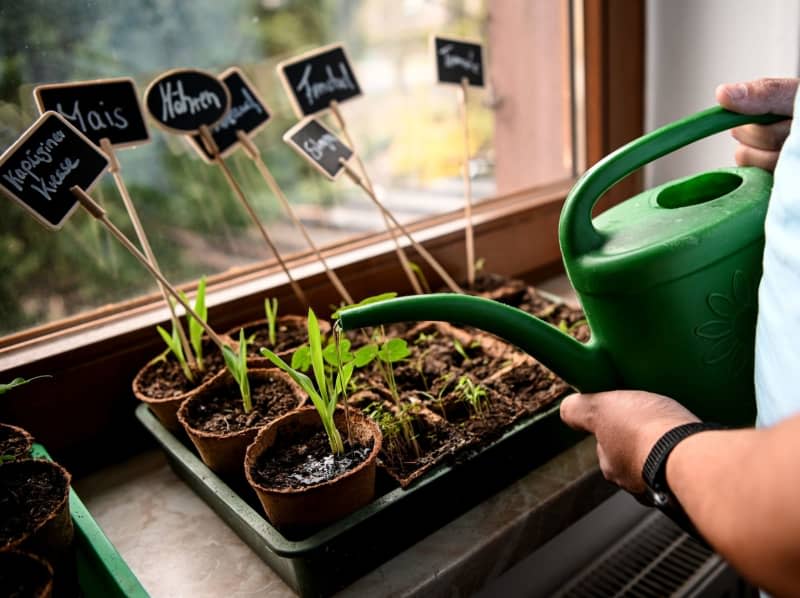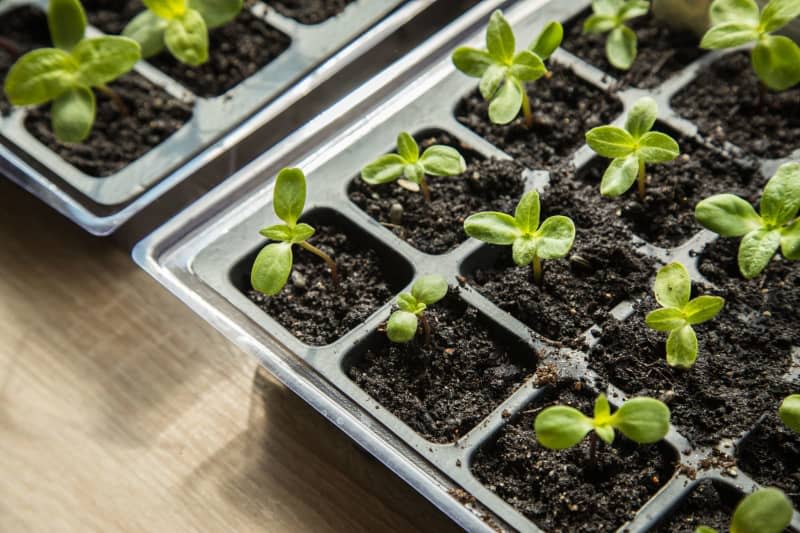If you're growing plants from seeds, bear these five things in mind

The gardening season doesn't start outside in the mud, but from the comfort of the windowsill indoors. That's where you want to begin growing vegetables and summer flowers. If you're starting off your seedlings indoors, here are the main questions to consider:
WHY does it make sense to grow veggies and flowers in advance?
Start off your summer flowers and vegetables indoors if it is still cool outside, to give them an edge over plants you place directly in the flower bed. It gives the plants indoors a bit more time to grow stronger and more resilient so they are pretty hardy by the time it is warm enough for them to be placed outside.
WHEN is it time to start growing my plants?
Patience is key, says landscape gardener and biologist Horst Mager. "You should wait until there is enough daylight and warmth before sowing so your seedlings develop quickly and can be planted outdoors about six weeks later."
If it is too early, you will wind up with plants that have long, thin, soft shoots. They will wilt, given the lack of light, often combined with high room temperatures. These plants are weaker and thus more susceptible to diseases and pests, so don't do anything in January or February.
If you are unsure, you can find the best time for planting on the seed packaging - depending on where you live, you can start most vegetables and summer flowers in March and April, says the Bavarian Garden Academy.
Be patient in the planting process and don't plant out your little seedlings in your garden or in pots on the balcony until there is absolutely no danger of frost at night - which may take you to mid-May, again depending on where you live. Also, bear in mind that slugs will be delighted to feast on your very young plants if they find them in the garden, so let the seedlings get a little stronger and tougher first, says Mager.
WHERE do you grow vegetables and summer flowers?
Place them close to a window as that should give them enough light, though it also depends on how warm your room is.
Vegetables cultivated for their fruit need temperatures between 22 and 25 degrees Celsius in order to germinate, according to the Bavarian Garden Academy. Once your plant is 2 centimetres high, it needs a cooler environment, about 16 to 20 degrees Celsius. Above that, it may become too tall and thin, and thus less strong.
If it is warm already in your area, then you can place your seedlings outside during the day to catch some sun which can help them grow more compact, says the garden academy. But don't expose them to direct sunlight as they won't be able to handle that yet.
Bear in mind that if you are growing lettuce, you want to start it off at a temperature below 16 degrees Celsius to germinate, so avoid putting it in a heated living room. Meanwhile celery, kohlrabi, cauliflower or early cabbage will want a temperature of at least 14 degrees Celsius, or they will bolt - meaning sprout too early.
HOW do you grow them?
Read the guidelines on your package of seeds and follow the quantities given. After all, especially with tomatoes, you can easily have 50 young plants per variety and who is going to eat them all later?
If you wind up spilling too many seeds in, then the professionals say you should be rigorous and remove the weaker seedlings. Keep the best ones. "The rest go to waste or give them away to your neighbour."
You don't need a special greenhouse or fancy pots to grow your seedlings. Mager uses empty egg cartons, fruit containers, toilet rolls and, of course, old plastic pots that used to house other plants. "The most important thing, however, is that they are clean," he says. Rinse any old pots out thoroughly.
He mixes the growing soil out of garden soil and sand. First, put the garden soil in the oven at 100 degrees Celsius for 30 minutes to eliminate any harmful germs. Then Mager mixes in about 30% of sand so that the substrate has good water and air circulation and the nutrient content is reduced.
Read on the pack how deep you need to plant the seeds - or if you even need to cover them in soil at all. "After all, in the great outdoors, seeds just fall down and germinate where they land. Sometimes, leaves fall on seeds and that gives them darkness," says Svenja Schwedtke, a gardener specializing in perennials. "So there are light seedlings, which don't need to be covered at all, and dark seedlings, which have substrate on top, usually at most as thick as the size of the seed."
The seed then needs to be able to swell so that it can germinate. "That's why you water seedlings," says Schwedtke. "Some seeds, such as those of sweet peas, should even be soaked in water overnight before you sow them." If this applies to plants, it is usually written in the instructions on the seed packets.
WHAT helps the plants?
"Once you start watering your seedlings, you should stick to it," says Schwedtke. "Because very fresh seedlings dry out quickly. Watering should be done with a gentle spray, not a fat stream - and carefully and as needed."
Once your plants have germinated, they usually need to be moved to larger pots. "When you do this, you carefully lift out the seedling from the sowing soil by the cotyledons and place it in good cultivation soil, up to the cotyledons," says Schwedtke.
Doing that will help seedlings get a better supply of nutrients that they cannot get in the sowing soil. It will also give them more space to grow if they are a further distance from the other seedlings.


